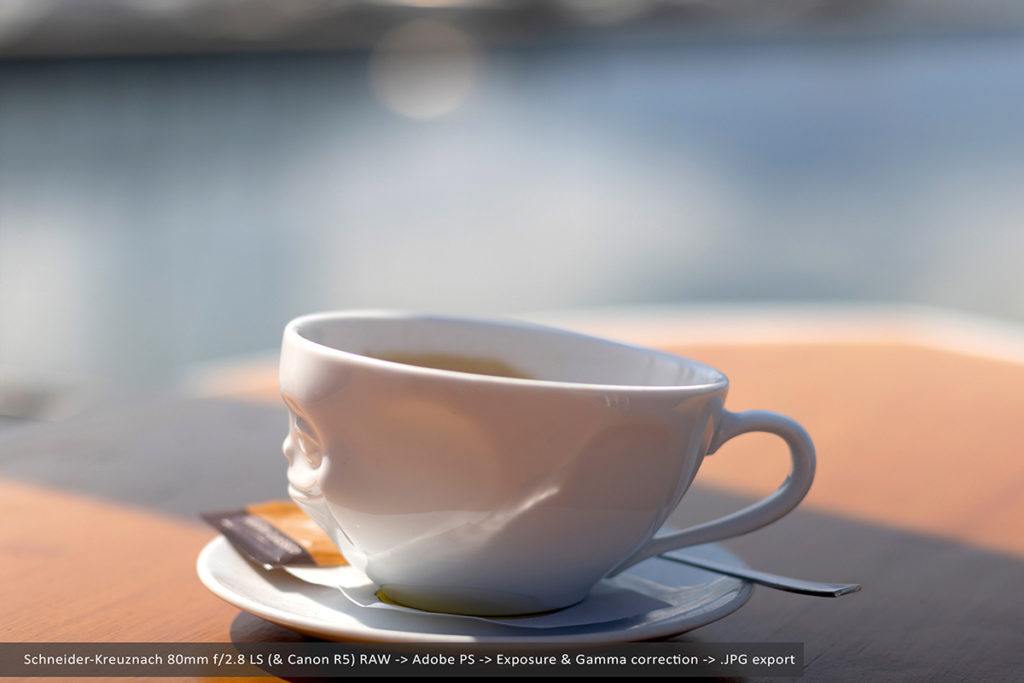Lens overview
The Schneider‑Kreuznach 80 mm f/2.8 LS is the standard leaf‑shutter prime for the Mamiya/Phase One 645 system. The original LS version debuted in 2009; Phase One later introduced a Blue Ring update and the Mark II (optical redesign) for the XF platform. Core specs (Mk I): 6 elements / 5 groups, f/2.8–22, min focus 0.70 m, 72 mm filter, ≈500 g, AF/MF, flash sync up to 1/1600 s. On 645 digital backs, it gives a 35 mm‑equivalent FoV ≈of 50 mm.
Manufacturing country: built using precision Japanese manufacturing (Phase One/Schneider collaboration).
Pricing — then & now:
- New (2015 launch pricing): €2,490 / $3,290 for the 80 mm LS. Phase One
- Current new/street examples: dealers list around $3,865 (availability varies by region/version).
- Used market (2024–2025): ~$500–1,300 depending on version/condition (older silver‑ring LS at the low end; Blue Ring & Mk II higher).
Build and ergonomics
Solid, professional build with bayonet hood, 72 mm front thread, and a comfortable size/weight for a medium‑format prime (≈500 g for the earlier LS). AF is quiet; MF override is available. The Mark II update increases mass (≈765 g) and revises the optical design (8/6), maintaining the same working ergonomics and 1/1600 s leaf‑shutter sync for strobe‑friendly shooting.
Optical performance
- Sharpness: Excellent central and across‑frame sharpness even near f/2.8 on MF backs; the Mk II emphasizes “bright edge‑to‑edge sharpness”.
- Color & contrast: Neutral color with strong micro‑contrast; coatings are tuned for high‑resolution backs.
- Bokeh: Natural transitions at portrait distances; depth‑of‑field control akin to a 50 mm on full‑frame (when comparing FoV on 645).
- Flare & CA: Well‑controlled for a fast standard prime; hood recommended around hard sources. (Mk II marketing highlights “sensational contrast”.)
- Distortion & vignetting: Very low distortion—the Mk II is positioned as “distortion‑free aesthetic”; mild light fall‑off at maximum aperture.
Digital adaptation
- Native systems: Phase One XF and Mamiya/Phase One 645 DF/DF+ (XF 645 bayonet). Full AF, aperture control, and leaf‑shutter operation up to 1/1600 s.
- Mirrorless (Canon RF, Nikon Z, Sony E, L‑mount, Fuji GFX): Physical adaptation is straightforward because the Mamiya 645 FFD is 63.3 mm, much longer than mirrorless mounts, so infinity focus is preserved with passive adapters. Lens conversion from medium format to full-frame crops the focal length and f-stops from 80mm to 50mm (49.6mm) with the EOS R system (645 crop factor is 0.62). You can learn more about crop factors here.
- Significant limitation: AF and aperture control require a native 645 AF body. The LS 80 has no aperture ring; with a passive adapter, it stays wide open at f/2.8 (some adapters add a stop‑down iris, which darkens and degrades image quality).
- Leaf shutter: cannot be triggered by passive adapters; you’ll use the camera’s focal‑plane shutter on mirrorless.
- 35 mm FoV note: The “50 mm‑equivalent” figure applies only to 645 systems; mounted on a full‑frame (35 mm) camera, the lens frames like an 80 mm lens. The 50 mm eq spec comes from Phase One’s 645 comparison chart.
Historical and collector context
Launched in 2009 for the 645 AF/DF generation, the 80 mm LS quickly became the workhorse portrait/reportage prime thanks to leaf‑shutter sync up to 1/1600 s—hugely valuable for outdoor fill‑flash. The Blue Ring cosmetic update and Mk II optical refresh (2020) modernized contrast and edge performance for 100–150 MP backs. For collectors/shooters, older silver‑ring LS copies are often bargain‑priced; Blue Ring and Mk II carry higher used prices.
Impressions
In day‑to‑day work, this is the one‑lens solution on XF/DF bodies—snappy AF, clean rendering, and strobe flexibility. On mirrorless via passive adapters, it’s MF‑only at f/2.8, still very sharp but without LS benefits—best for portrait and product work where you can compose deliberately.
Sample Photos

Verdict — Pros and Cons
Pros
- Leaf shutter with flash sync up to 1/1600 s—killer for location flash
- Excellent sharpness/contrast; modern coatings; reliable AF on XF/DF bodies
- Low distortion; natural color; versatile 80 mm MF standard (≈50 mm eq on 645)
- Solid build; 72 mm filter; manageable size/weight (Mk I ≈500 g)
Cons
- Aperture/LS don’t work off‑system (passive adapters = f/2.8 fixed, no LS)
- Price remains high, new; Blue Ring/Mk II used prices stay premium
- Mk II is noticeably heavier (~765 g)
- No EXIF information transferred when converted to Canon RF




